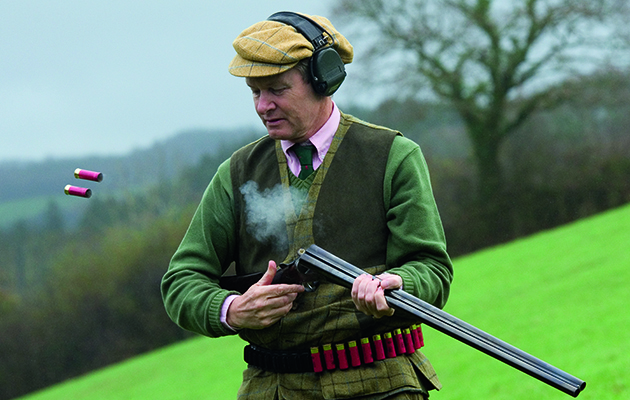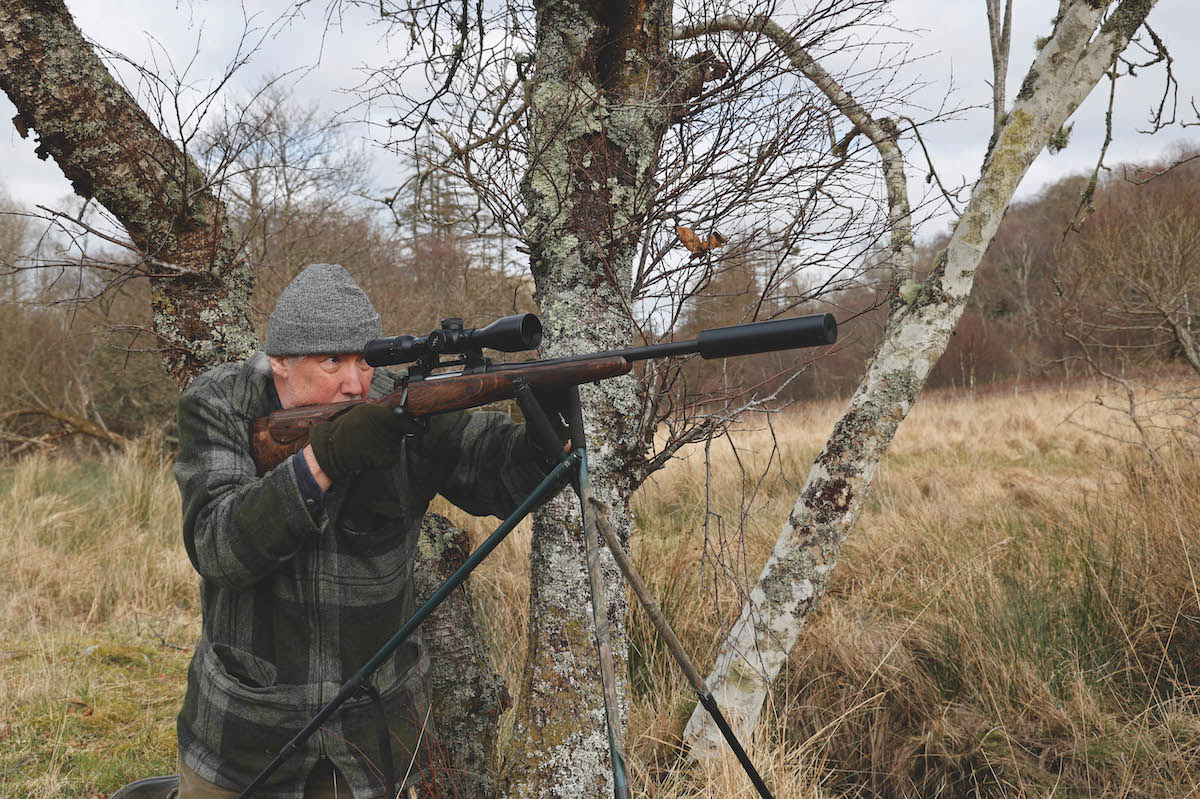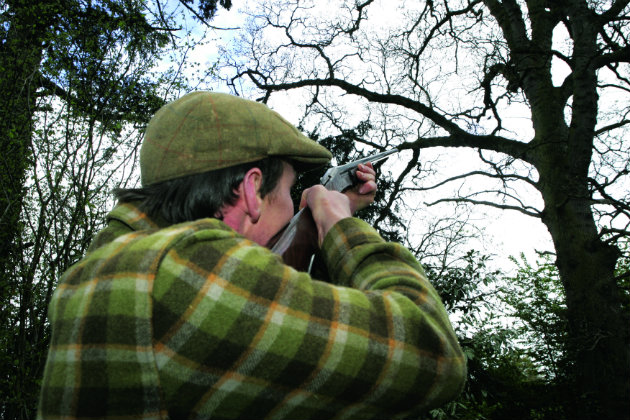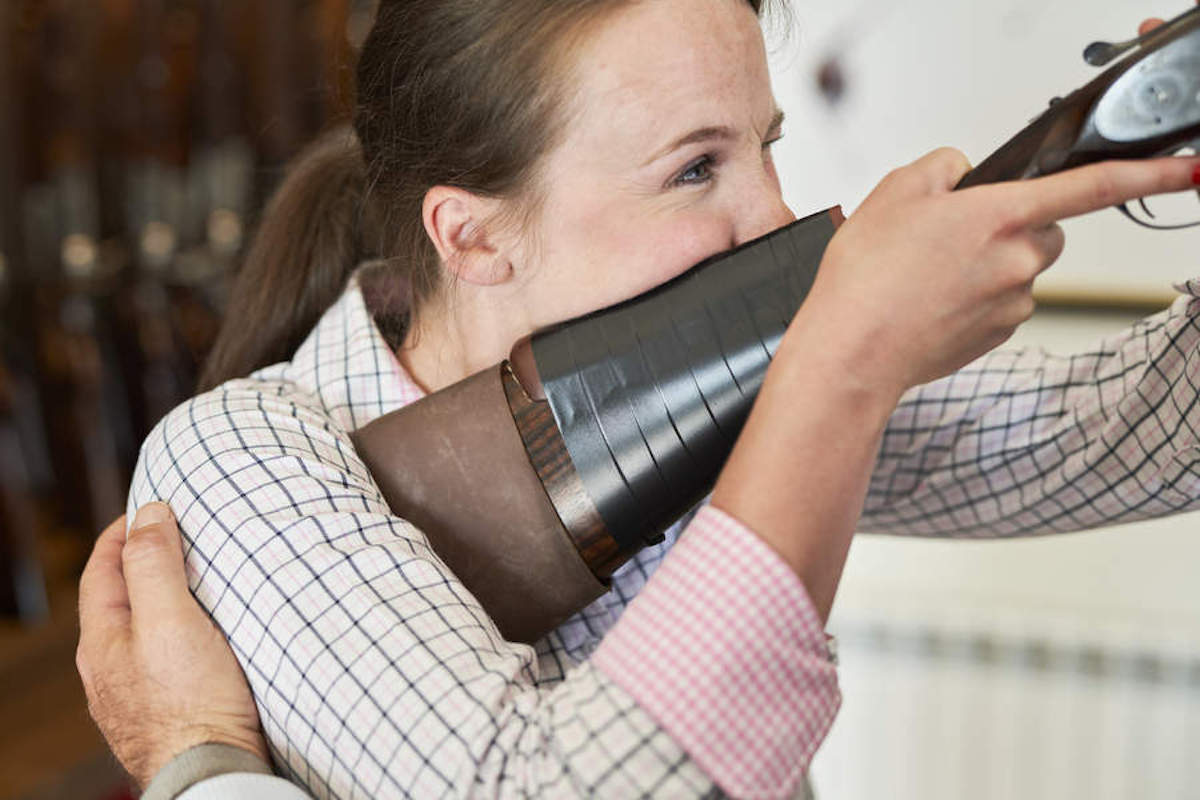Are you shooting yourself to deaf?
Some guns don’t feel the need to use ear protection on the peg, but as Dave Svinarich explains in his examination of the science of Noise Induced Hearing Loss (NIHL), it’s a habit that will do you harm.

Ignoring the risks posed by shotgun fire is a dangerous game, but even when ear protection is used the ear is not beyond damage
An estimated 15,000 people will develop Noise Induced Hearing Loss (NIHL) in Britain this year, largely through occupational exposure. The National Institute of Health reports that 15 per cent of all Americans between the ages of 20 and 69 have some degree of high-frequency hearing loss. Shooters who forgo or lack hearing protection, whether in the field or on the range, are at particular risk of developing Noise Induced Hearing Loss. (Read our suggestions for the best ear defenders).
The older gentleman with whom I was shooting cupped his left ear. With a weathered hand he cocked his head towards me as I complimented him on a fine shot. Failing to understand me, I repeated my praise at a shout and he finally smiled and nodded his head in acknowledgment. I had noticed earlier he was shooting without any hearing protection and it was likely that a lifetime of shooting this way had significantly diminished his hearing.
Understanding the nature of Noise Induced Hearing Loss
The acute acoustic trauma from gunfire may cause NIHL with only a single exposure, providing the sound intensity is sufficiently great. Indeed, any exposure over 140dB, which is below the sound level of most shotguns, poses the risk of immediate hearing damage. Conversely, hearing loss may be much more gradual, resulting from the cumulative effects of gunfire experienced over many decades in the field, as in the case of my older shooting companion. Loss of hearing depends not only upon the loudness of the noise but also upon its frequency, duration of impulse and length of exposure. Think about the differences between the sharp crack of a high-velocity bullet and the thundering boom of an artillery piece. Both may cause hearing loss but the nature and quality of sound differs between them.
NIHL may occur when we are exposed to sounds above 85dB for protracted periods of time. This is a surprisingly low level of noise, about what one encounters with a lawnmower or on a busy street corner. In sensorineural hearing loss, sensitive hair cells that line the cochlea within the inner ear and which transduce sound waves into nerve impulses, are mechanically damaged by the sound waves. In mammals, once these delicate hair cells are killed they will not regenerate and their loss results in permanent hearing loss at particular frequencies.
NIHL generally affects hearing in the higher frequency ranges (3,000-6,000Hz) and hearing loss can be so gradual and insidious it may not be initially recognised. Normal speech ranges between 300Hz to 3,400Hz, so it is typically the higher-frequency voices from women and children that are diminished first. In time, sounds become distorted or muffled and conversations become less distinct and harder to follow, especially in noisy environments.
Individuals who have high-frequency hearing loss may have difficulty hearing speech sounds like “v”, “th”, or “s”, and may also experience tinnitus. Tinnitus is a perceived ringing, buzzing or roaring sound in the ears. It is typically associated with acoustic trauma and may be temporary, intermittent, or permanent. It is often one of the first signs of hearing loss that a person notices and should prompt a visit to an audiologist or an otolaryngologist.
Hearing loss due to gunfire may not affect both ears to the same degree. For example, right-handed shooters typically have greater hearing loss in their left ear because it is exposed to 3-7dB more noise than the right ear. This is due to acoustic shadowing by the head, which blocks some of the noise reaching the right ear. The decibel scale is logarithmic so the loudness of sound increases by a factor of 10 for every 10dB increase. Other factors which affect the amount of noise a shooter is exposed to include the shotgun bore (larger bores are generally louder), barrel length (shorter barrels are generally louder), and the proximity of the individual to the muzzle. Because sound is directional, someone immediately in front of the muzzle receives significantly more noise than someone immediately behind it. It is important to realise decibel readings are typically made directly at the muzzle and thus represent the maximum amount of noise one could receive from a given shotgun.
How to prevent additional hearing loss
Although NIHL may be permanent, the good news is that there are a number of precautions you can take to prevent additional hearing loss. Hearing protection may attenuate the noise of gunfire either passively as with conventional earmuffs or earplugs, or in an active fashion with noise-cancelling headphones. For earmuffs and headphones to be effective, they must fit properly and completely seal around the ear. For earplugs, they must completely obturate the ear canal. Unfortunately, simply shielding one’s ears cannot fully protect you from the harmful effects of noise because sound will still reach the inner ear directly through the transmission of sound energy via the bones of the skull. This is why no form of hearing protection can completely stop sound from reaching your inner and middle ears.
Passive hearing protection, in the form of earmuffs or earplugs, will each attenuate noise by 5-13dB. For noise that exceeds 105dB, and this is virtually any type of shooting without a moderator, the combined use of both earplugs and earmuffs is highly recommended. This results in a combined attenuation of around 14.5dB. The reason this value is not the sum of both attenuation values is because of the conduction of sound through the bones of your skull. Another form of passive hearing protection is custom-made earplugs. These are moulded in silicon or rubber and conform precisely to your ear, thus ensuring a perfect fit. Although more expensive, they are as effective as common earplugs and are considerably more comfortable. Some of the newest custom-moulded earplugs also incorporate noise-cancelling electronics or active noise reduction.
Active noise reduction (ANR) works through a process called destructive interference. This occurs when an incoming soundwave is met with an inverse soundwave produced by the headphone, thus cancelling out the incoming sound – much like when the peak of a wave hits the trough of another wave. Noise-cancelling headphones are no more effective than passive attenuation and they are considerably more expensive. However, they do offer the advantage of allowing normal conversation by amplifying useful sounds like voices while reducing high-impulse noise.
Each type of hearing protection has its own distinct advantages and disadvantages. Earplugs are inexpensive, disposable, will not get in the way of your stock, and are as effective as any other type of protection. However, some shooters, especially women and children, may find them uncomfortable to wear and difficult to properly fit. Passive earmuffs are more expensive and more bulky but are generally more comfortable to wear than earplugs and offer nearly the same level of noise attenuation. Headphones with ANR have nearly the same degree of sound attenuation as passive systems and are more expensive. Their principle advantage is they amplify useful sounds and enable regular conversation. Custom-moulded earplugs, while considerably more expensive, are much more comfortable to wear, and those that incorporate ANR have all the advantages associated with active noise cancelling.
In the final analysis, combining earplugs with passive earmuffs still remains the most effective way to attenuate the sound of gunfire. As shooters, we all run the risk of developing NIHL. Although you cannot bring back hearing that has been lost, you can take effective measures to protect yourself from subsequent injury by always wearing adequate hearing protection.








